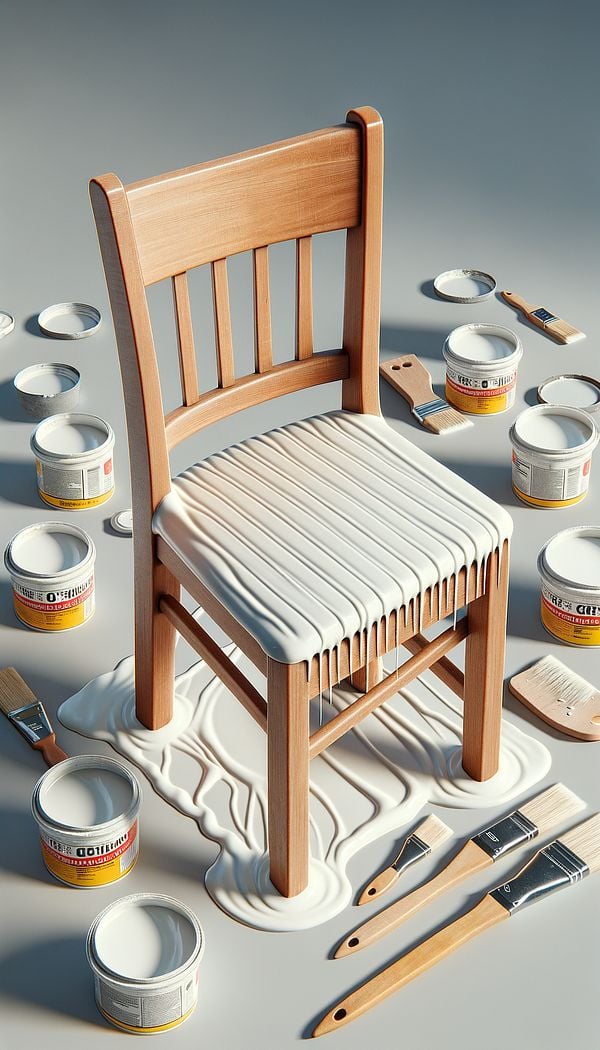What is Gesso?
Gesso is a white paint mixture consisting of a binder mixed with chalk, gypsum, pigment, or any combination of these materials, used in artwork preparation.
Description
Gesso, pronounced 'jesso,' is a foundational element often used in the art and design world to prepare surfaces for painting or finishing. This highly adaptable substance acts as a primer, creating a smooth and more absorbent ground for paints. Its origins trace back to the Italian Renaissance, where artists sought to create the perfect base for their frescoes and panel paintings. Gesso has since evolved and is now widely used not only in traditional art but in interior design as well.
In the context of interior design, gesso can be applied to furniture, walls, and decorative objects to create a uniform surface that enhances the adhesion and longevity of paint. Additionally, because of its textural qualities, gesso is sometimes used for decorative effects, creating unique finishes and textures that add depth and interest to spaces. This versatility makes it an essential tool in the transformation and restoration of interior spaces.
Technically, there are two types of gesso: traditional gesso, made from animal glue and gypsum (or chalk), and acrylic gesso, a modern variation that is more flexible and suitable for a variety of surfaces, including canvas and wood. Acrylic gesso is especially popular in contemporary interior design projects for its ease of use and durability.
Usage
Historically, gesso was primarily used in the preparation of panels and canvases for painting. Today, its application extends to interior design, where it is used on furniture, wall panels, and decorative accessories to enhance texture and prepare surfaces for painting or other finishes. Designers also leverage gesso for creating bespoke finishes, such as a distressed look on vintage furniture or a smooth base for intricate painted designs.
FAQs
-
Can gesso be used directly on wood furniture?
Yes, gesso can be applied directly to wood furniture. It serves as an excellent primer, creating a smooth surface for subsequent layers of paint or finish, and can also be used to create decorative textures.
-
Is there a difference between acrylic gesso and traditional gesso?
Yes, the main difference is in the composition and flexibility. Traditional gesso is made with animal glue and gypsum or chalk, making it more suitable for rigid surfaces. Acrylic gesso, on the other hand, includes an acrylic polymer medium, making it more flexible and versatile for various surfaces, including wood, canvas, and even metal.
-
How does gesso improve the longevity of painted finishes?
Gesso improves the adhesion of paint to the surface, ensuring that the paint sticks better and lasts longer. It also provides a protective layer that can help mitigate moisture absorption and surface irregularities, contributing to the durability of the painted finish.
-
Is gesso necessary for all painting projects?
While not strictly necessary for all projects, using gesso is highly recommended for achieving a high-quality and durable finish. It is particularly beneficial when working on absorbent surfaces like wood, where it helps to seal the surface and create a smooth base for painting.
-
Can gesso be tinted or colored?
Yes, although gesso traditionally comes in white, it can be tinted with acrylic paints to achieve a desired base color. This can be especially useful for achieving specific design effects or as an underpainting strategy.
-
How do you apply gesso?
Gesso can be applied using a brush, roller, or spatula. For smooth finishes, apply in thin layers, allowing each layer to dry thoroughly before applying the next. For textured effects, thicker layers may be applied and manipulated while wet.
Practical Application
When using gesso in your interior design projects, it's important to consider the type of surface you're working with and choose the appropriate type of gesso (acrylic or traditional). Begin by cleaning and lightly sanding the surface to ensure good adhesion. Apply gesso in thin, even layers, allowing adequate drying time between coats. Experiment with different application techniques to achieve desired textures and finishes. Remember, a well-prepared surface not only enhances the aesthetic appeal of your project but also contributes to the longevity and durability of the finish.
-
Furniture Types599 articles
-
Decorative Techniques322 articles
-
Fabrication & Craftsmanship133 articles
-
Wall Treatments & Finishes157 articles
-
GrommetA grommet is a ring or edge strip inserted into a hole through thin material, typically made of metal, rubber, or plastic.
-
AdamesqueA style related to the designs of the Adam Brothers, characterized by neoclassical elements.
-
Rule JointA type of hinge commonly used in drop-leaf tables.
-
Bonnell CoilBonnell Coil is a type of coil used in innerspring mattresses for support.
-
Fan PatternedFan patterned refers to a design motif that resembles the shape and spread of a hand-held fan.
